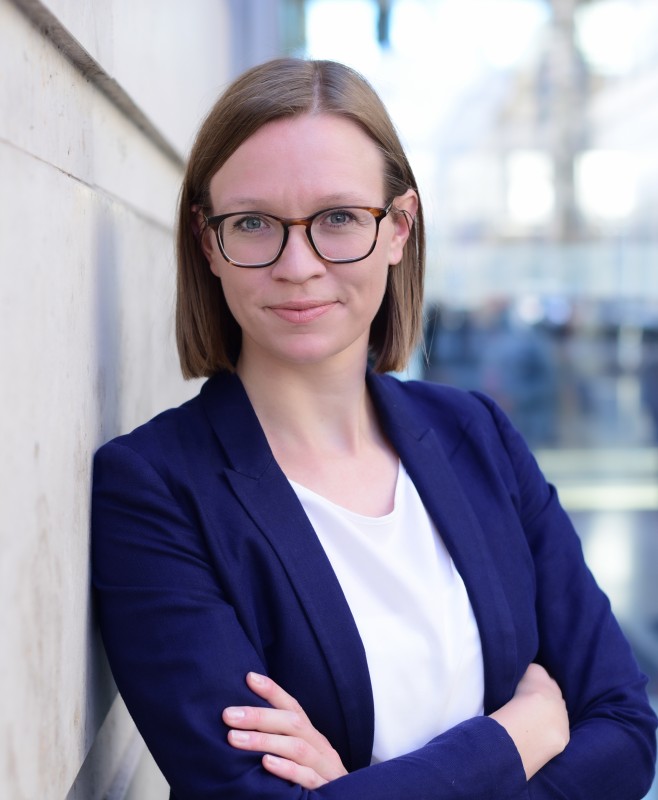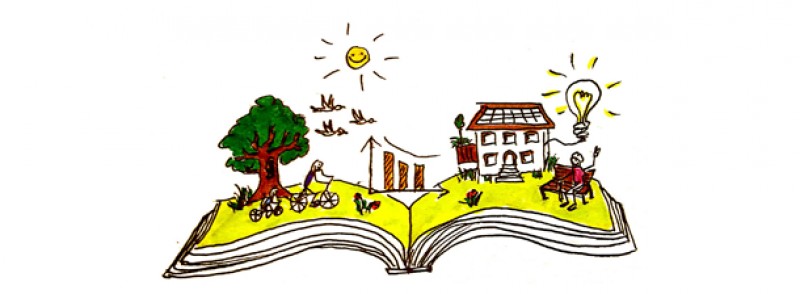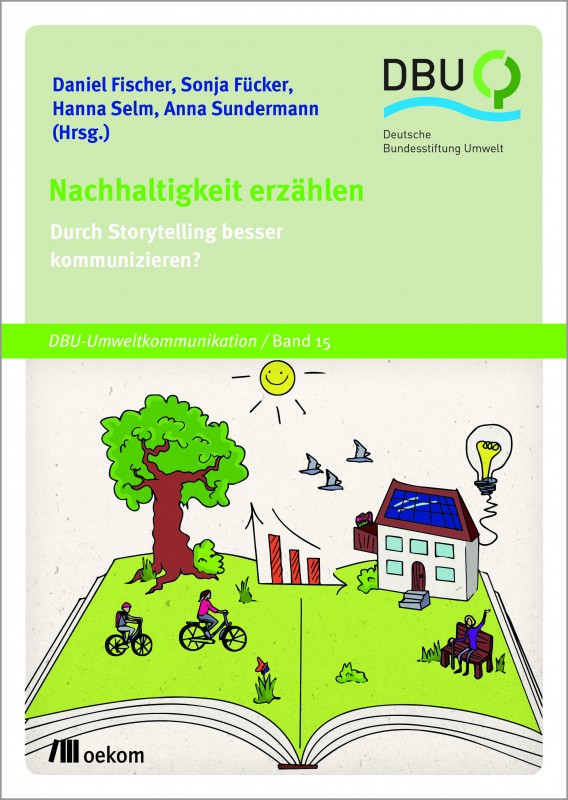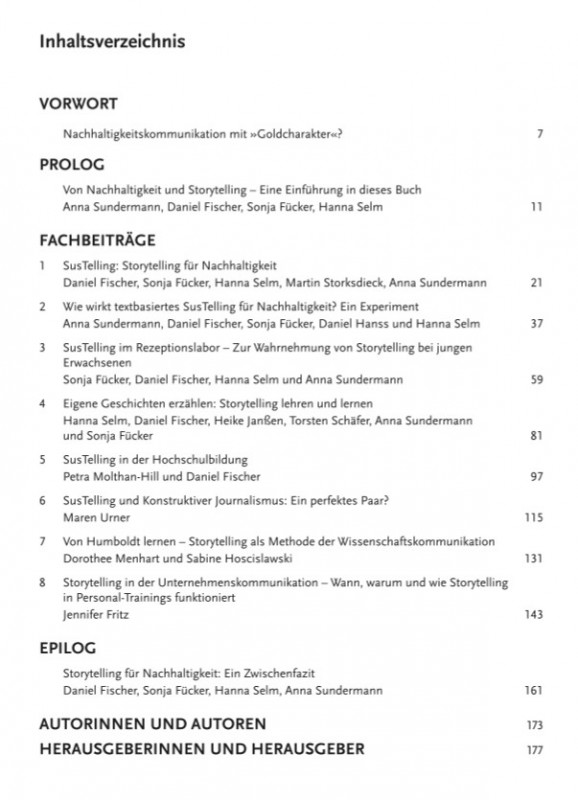News Details

How can we tell stories that lead to behavioral changes for sustainable futures?
KLI fellow Anna Sundermann talked to us about a new book and an online tool that can help activists and communicators tell evidence-based, effective stories to make a difference.

copyright Saskia Ostner
Q: Congratulations on the new book! How did the book come about?
Between 2017 and 2020, the SusTelling (Storytelling for Sustainability Communication, www.sustelling.com) project team got together to analyze storytelling, especially storytelling for sustainability. We asked ourselves: How can journalists communicate sustainability topics to young people? What are effective formats? How can we formulate a clear definition of “storytelling”? So many people claim that they are using stories as a means to convey ideas and drive action, but when pushed to define the concept, they find it hard to pin down exactly what it is and how it works.
Therefore, our group (the SUCO2 research group), led by Daniel Fischer (now: Wageningen University) with Hanna Selm (Leuphana University), Sonja Fücker (now: University of Hannover) , and I (Leuphana University & KLI) as members, set out to develop a conceptual framework and definition of “storytelling” and use that to engage in a dialogue with a range of experts. The project was funded between 2017 and 2020 by the Deutsche Bundesstiftung Umwelt [LINK].

Nachhaltigkeit erzählen: Durch Storytelling besser kommunizieren?
Q: What is the book about and who is it for?
Our collection addresses three main questions:
- What is our understanding of sustainability-related storytelling?
- How does sustainability-related storytelling work?
- How can sustainability-related storytelling be taught, learned and practiced?
Our aim is to engage with journalists, science communicators, corporate communicators, and educators, currently in the German-speaking world. For the English speakers out there, a version of the conceptual chapter can be found in Storytelling for Sustainability in Higher Education: An Educator’s Handbook (“Storytelling for Sustainability: A Definition and Its Implications for Education and Communication”). [LINK]

Q: What is the best way to read and use your book?
Here’s how we structured the book: Part one is dedicated to our project. It starts with a conceptual framework that provides a common definition of storytelling for sustainability (which we called SusTelling). Next, you’ll find two chapters with empirical project results on how sustainability has impacts and is perceived by young adults.
The second part of the book has emerged from a dialogue with practitioners from science communication, education, journalism and business communication. One goal was a joint understanding of SusTelling in order to reach more alignment around the concept. This cooperation was a wonderful experience and led to improved mutual understanding.
We also developed an online tool to help people develop their own stories! The tool, called E-Learning SusTelling (https://elearning.sustelling.de/) is essentially “a storytelling of storytelling.” Daniel, our project leader, lends his voice to walk you through the key elements of the book and helps you creating your own evidence-based stories. This will be especially helpful for NGOs and activist groups like Fridays for Future with limited access to research time and materials, but who nonetheless want to tell their stories.
Q: Did anyone develop stories with your book and online tool?
Yes! Some students developed a website with stories on sustainable food forests in Germany [LINK].  The students had systematically evaluated sustainable food forests during a seminar at Leuphana University. The lecturer, Stephanie Albrechts, was looking for a creative solution to communicate the students’ findings. In a conversation, she told me it was very helpful that the students were able to learn the method at their own pace, leaving more time for scientific work during the seminar.
The students had systematically evaluated sustainable food forests during a seminar at Leuphana University. The lecturer, Stephanie Albrechts, was looking for a creative solution to communicate the students’ findings. In a conversation, she told me it was very helpful that the students were able to learn the method at their own pace, leaving more time for scientific work during the seminar.
There are scientific outcomes of the project as well. We conducted social science studies that tested, for example, if and how two different versions of a news story, one in SusTelling and one in reporting style, impacted a sample of more than 800 young adults’ intentions to consume sustainably. In addition, we conducted a systematic literature review to analyze different understandings and related effects of storytelling.
Q: How does this book and the project behind it relate to your current work at the KLI?
In my empirical research, I have so far analyzed the learning processes connecting sustainability-related learning experiences and students’ learning outcomes. One result of my PhD research is that current teaching approaches in higher education hardly seem to affect students’ sustainability conceptions or attitudes over a study program of three years. Thus, investigating how innovative teaching and communication approaches like mindfulness or storytelling can facilitate students’ sustainability-related learning is naturally related to my primary research interests in learning processes.
Another outcome of my empirical research is that predicting students’ learning outcomes in higher education for sustainable development remains difficult. In my KLI project I will synthesize influencing factors on students’ sustainability conceptions based on an additional literature review and from my PhD work. This will then help us better understand why some sustainability related teaching approaches might be more helpful to enhance learning than others!
Thank you, Anna, for an engaging walkthrough!
Anna's project at the KLI: How Studying Sustainability Affects Students´ Understanding of Sustainability: A Longitudinal Analysis of Undergraduates´ Learning Processes and Outcomes
For more information about the book, the SUCO2 research group, and Anna’s work, check out the following links:
- BOOK page: https://www.oekom.de/buch/nachhaltigkeit-erzaehlen-9783962382759
- SUCO2-Research group: https://suco2.com/
- Research gate: https://www.researchgate.net/profile/Anna_Sundermann
Interviewer: Lynn Chiu

